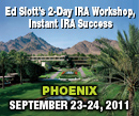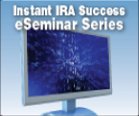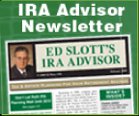It is estimated that “Baby Boomers”, individuals born between 1946 and 1964, stand to inherit a total of $8.4 trillion from their parents or other relatives of a previous generation. In fact, $2.4 trillion has already been received. This was recently reported by a MetLife study authored by the Center for Retirement Research at Boston College. Most of these boomers can expect to receive their inheritances in late middle age, upon the death of their last surviving parent.
Included in their inheritances will undoubtedly be many traditional and Roth IRAs. If applicable rules are followed correctly by those inheriting these accounts, the distribution of this money and payment of any related income tax can be spread over their continuing life expectancies. Required minimum distributions (RMDs) will be paid annually, allowing remaining funds to stay in the IRA with the opportunity to continue growing on a tax-advantaged basis.
Important things to keep in mind when inheriting an IRA:
• If the decedent had a traditional IRA and was in pay status (over age 70 ½) the RMD for the year of death must be satisfied. Any amounts withdrawn after death to complete the RMD must be paid to the beneficiary.
• In the case of multiple beneficiaries, separate shares for each must be established and funded by 12/31 of the year following the year of the IRA owner’s death. This will ensure that each beneficiary can use his or her own life expectancy to calculate future withdrawals.
• A new inherited IRA needs to be established with the name of the decedent referenced in the title.
• The beneficiary should designate a successor beneficiary (or beneficiaries) so that any inherited IRA funds remaining at his or her death will avoid probate (these designations can be changed whenever the beneficiary desires.)
• RMDs for the beneficiary must commence in the year following the year of the original IRA owner’s death.
• The beneficiary’s life expectancy factor, based on his or her attained age in the year following the year of the IRA owner’s death, will be reduced by one each subsequent year. This factor is drawn from the Single Life Expectancy Table found in IRS Publication 590.
To illustrate the power of a stretch IRA, let’s assume a traditional IRA owner dies at age 85 and leaves two children, ages 57 and 58, as beneficiaries. One year after the owner’s death, one child would be age 58, and the other 59. The 58-year-old child could stretch RMDs over the next 27 years and the 59-year-old over 26.1 years. Income tax would be owed on the distributed funds to the extent they don’t represent a return of the original owner’s after-tax contributions. The same payment period would apply in the case of a Roth IRA, but all distributions would be tax-free except for any earnings withdrawn within 5 years of the original owner first establishing a Roth IRA.
In order to insure that the beneficiaries take advantage of the stretch payment opportunity presented to them, they should seek competent assistance from an advisor who is well-versed in the IRA rules. If a beneficiary does not take the full RMD annually, there could be a 50% penalty. No, this is not a misprint -- 50% penalty!
By IRA Technical Consultant Marvin Rotenberg and Jared Trexler
------------------------------------------------------------------------------
Comment, Question, Discussion Topic on your mind? Click on the Blue Comment Link below and leave your thoughts then check back to see what other consumers and advisors think.
*Copyright 2011 Ed Slott and Company, LLC
Quality content
- Siti Non Aams
- Nuovi Siti Casino
- Casino Non Aams Italia
- Casinos Not On Gamstop
- Casino Sites Not On Gamstop
- Online Casino
- UK Casino Not On Gamstop
- Sites Not On Gamstop
- Casino En Ligne
- Casino En Ligne Fiable
- Casinos Not On Gamstop
- UK Casino Not On Gamstop
- Casino Sites Not On Gamstop
- Non Gamstop Casinos UK
- Casino Online Non Aams
- Casino Not On Gamstop
- Meilleur Casino En Ligne France
- Casino Sites Not On Gamstop
- Non Gamstop Casino Sites UK
- Casino Sites UK Not On Gamstop
- UK Casino Not On Gamstop
- Meilleur Casino En Ligne Fiable
- Casino Online Non Aams
- Casino Non Aams
- Casino Sites Not On Gamstop
- Meilleur Casino En Ligne Belgique
- Lista Casino Online Non Aams
- 안전한 파워볼사이트
- Meilleur Casino En Ligne 2026
- Meilleur Casino En Ligne 2026




0 comments:
Post a Comment